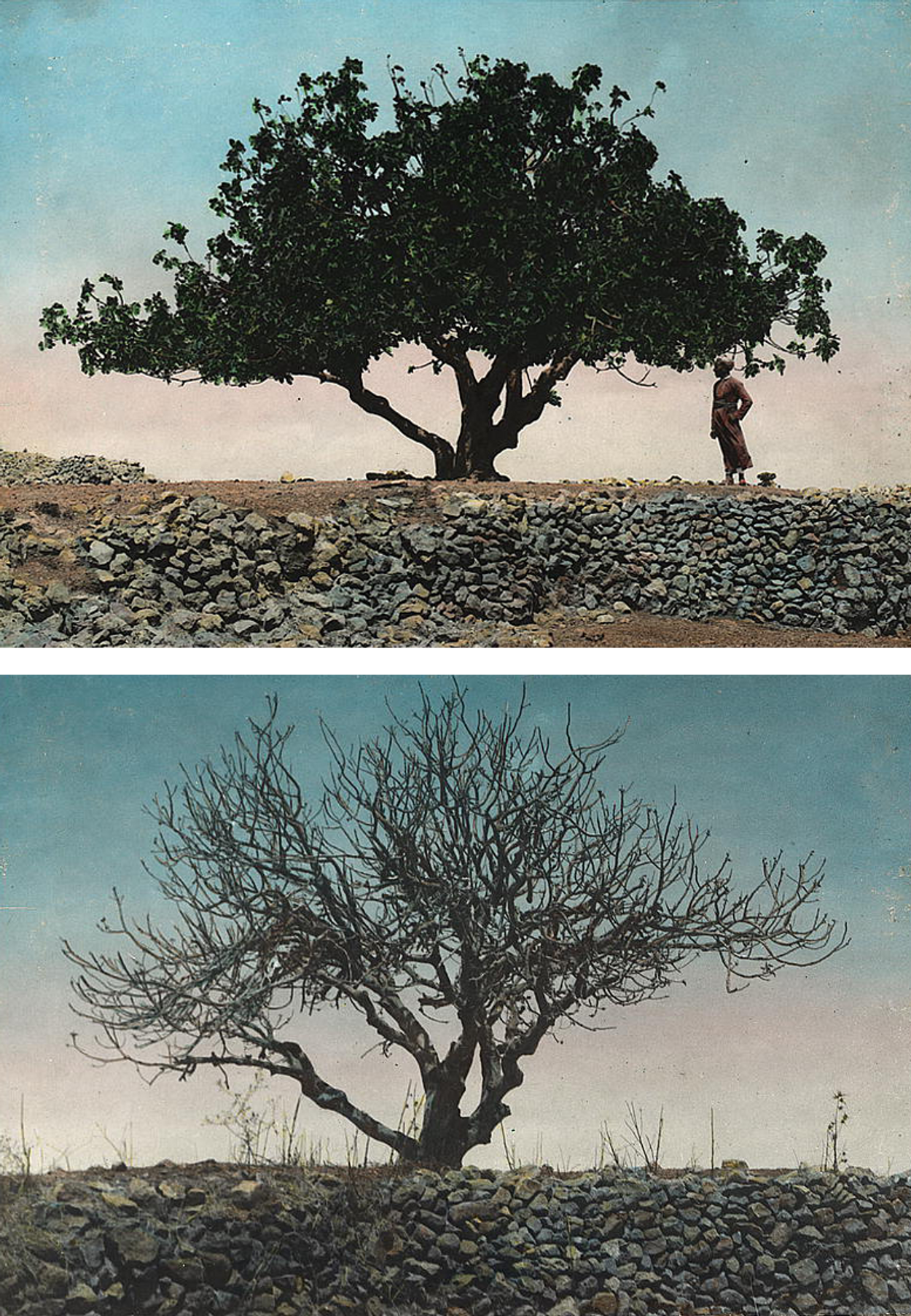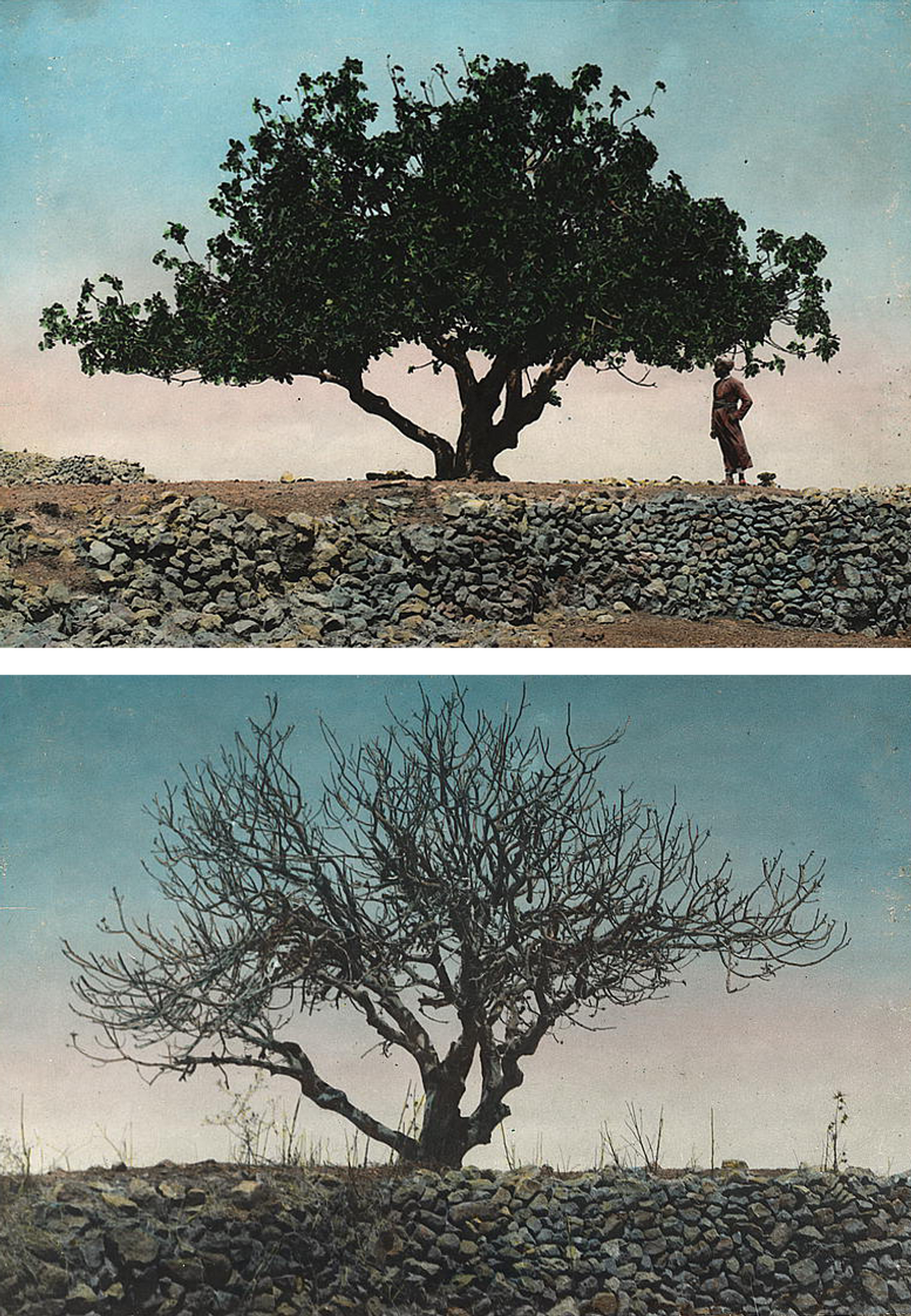Jerusalem’s Plague of Locusts
A once-in-a-generation, yet largely forgotten, insect swarm reminds us that God’s plagues and wonders might be closer at hand than we think




Subsequent events now make the once-a-generation locust plague that occurred in 1915 seem like a minor horror in the 20th-century history of the land that became the State of Israel. The next several decades of world wars, regular wars, riots, invasions, massacres, and terror attacks might even make the insect swarm of that distant year seem comfortingly separate from the grim agency of human beings, an event belonging only to nature, with nothing much to say about us.
Jews should know better. In the Pesach story, locusts are the eighth plague visited upon Pharoah, the antepenultimate rung on the God of Israel’s escalation ladder. The Muslims of Ottoman Palestine in 1915 certainly knew better. “All this is no use; go home and rest, you can do nothing,” an elderly peasant told National Geographic correspondent John D. Whiting, as his team from the American Colony in Jerusalem hunted for locust eggs on Mount Scopus. “They are Allah’s army, and once they fly they will destroy everything.” Whiting admits that events vindicated this stranger’s outlook. “He walked away seemingly amused at our optimism, while we smiled, not knowing from experience, as he did, the truth of his apparent exaggerations.”
What the magazine referred to as “Jerusalem’s Locust Plague” would have remained completely unknown to me if a friend hadn’t recently found the December 1915 issue of National Geographic at her grandmother’s house in upstate New York. I’ve never encountered any physical evidence or historical memory of this event over decades of visiting and reading and thinking about the Holy Land. But the horrors that a Wilson administration-era National Geographic reader encountered across 30-odd pages, right after eye-catching ads for Beech-Nut Tomato Catsup (“only two hours to make, bottle, and sterilize”) and the Alvin Silver Company’s brand new Lafayette and George Washington spoon models, are not the kind that would just seem to easily drop out of the collective unconscious. Indeed, they did not, at least not in the premodern era: Whiting interpolates strikingly lengthy and detailed accounts of a locust invasion from the biblical book of Joel throughout his description of what he personally witnessed, establishing that there was a time when locust swarms actually were recorded for all of history, and were seen as an extension of, and perhaps a deservingly harsh commentary on, human affairs.
Whiting often writes as if he’s seeing the Bible come to life in front of him. “When the daintier morsels were gone the bark was eaten off the topmost young branches, which, after exposure to the air, blanched snow white,” he writes of the locusts’ process of destroying an orchard of fig trees, before once again quoting Joel: “He hath lain my vine waste, and barked my fig tree … the branches thereof are made white.” The ravages of the swarm are also observed with dispassionate observational dread. We learn that there are 65,000-75,000 locust eggs found in a single cubic meter of soil, and that the creatures advance “at a forward march of 400 to 600 feet a day” once they find farmland to destroy. They blot out the sun—there is even a photo, credited to the American Colony, of clouds of the little beasts blackening the noonday sky. It takes them about two days to eat just about every leaf in Jericho, a city that is still hedged by fruit orchards. Two days later, not a single locust is to be found there.
Nothing could satisfy the swarm’s appetite, which is metaphysical in its enormity, like the manifestation of some deep evil. They eat palm trees until they’re little more than stark wooden ghosts, then eat olive trees to the pit once they run out of softer vegetation. When all available leaves are eaten, the insects turn on one another. “Scarcely had a locust been hurt or crushed before its fellows would be found fighting over it like dogs with a bone,” Whiting reports. Failing that, they even turn on themselves. “At times injured locusts would be found eating away at their own bruised bodies.”
The swarm is indifferent to human civilization, which exists as a pathetic physical obstacle in their single-minded quest to consume. At what was then the U.S. Consulate—a building which is still standing, on Jerusalem’s Agron Street—the critters blacken the stone walls and begin eating away at the courtyard garden. “The moat around ‘David’s Tower,’ was so filled that the dry earth seemed to be a living mass,” Whiting writes of the swarm’s arrival in the Old City of Jerusalem. “Up and up the city walls and the castle they climbed to their very heights.” In Nazareth, the air was rendered “almost unbreathable” by the stench of locust carcasses. Olive oil, used for illumination, heating, and cooking, “is now high-priced and almost unprocurable,” with churches in the Old City letting their lamps go dark for the first time in centuries. Fresh produce becomes a scarce commodity that only the rich can afford.
Whiting, who comes across as a consummate scientific rationalist, insists that human ingenuity must be able to do something to master the mindless beasts, whose wings turn crimson as they molt and mature, such that the swarms “transform the dark green foliage into a distinctive red appearance.” The beasts insist otherwise. The fact that much of human society succumbs so helplessly at their arrival is proof to some that there is a basic and inescapable kinship between man and locust. Whiting notes that there is a Muslim tradition, traceable to Omar Ibn al Khatab, the second caliph, that locusts were “created from the clay that was left over from the piece Adam was made of.” (Alas, there is nothing in Whiting’s account about the plague’s impact on the Jews of Ottoman Palestine. The only Jews mentioned in his article are from the Bible. World War I, then ongoing, is mentioned only once, in passing.)
It is practically a cliche that the Passover story, and later episodes in the Tanach, trace the passage of authority and responsibility from God to the human race, as represented by the Israelites. God guides the Jews to freedom and then grows ever more occluded before disappearing beyond the sense perception of any conscious human being. Perhaps there is a similar dynamic in more recent times: Locust plagues of such society-busting severity are a thing of the past in Israel, along with malaria and conventional interstate warfare and a host of other traumas. But the continuities between the age of Moses and Pharaoh and the strangely legible world of 1915 should also give pause, especially with a viral plague still circling the globe. Maybe higher powers aren’t quite as far away as we like to think.
Armin Rosen is a staff writer for Tablet Magazine.